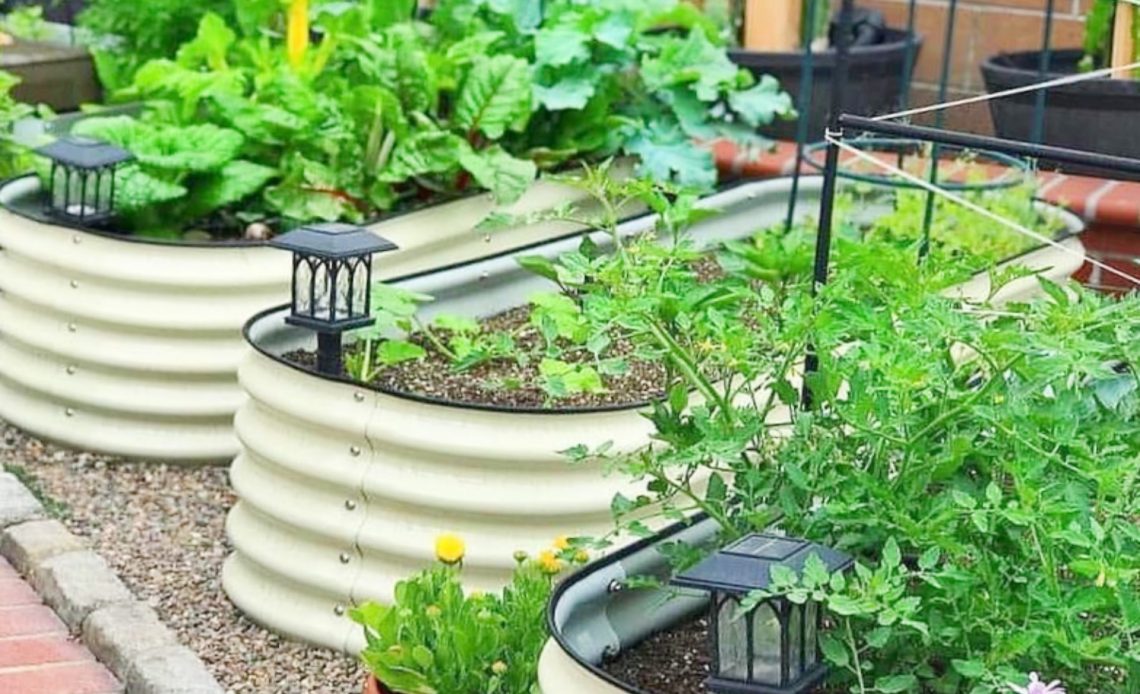

We’re here to help! Wild Yards is a completely free website that is 100% dedicated to helping you create a wildlife-friendly, sustainable yard. Read more
WildYards is reader-supported. When you buy a product through a link on our site, we may earn a comission. Every product is independently selected by our (obsessive) editors and our reviews are unbiased and objective. Read more about our mission or our privacy policy.
Gardening in raised beds is a great choice, especially if your native soil is nutrient-deficient and/or difficult to dig into. Truth be told, we prefer growing in raised beds. They make gardening easier. You don’t have to get on your hands and knees to fertilize your plants or remove weeds. Plus, you can fill them with your choice of soil, giving you greater control over what goes into your crops. Many gardeners use galvanized steel for their raised garden beds, but there are some concerns about toxic metals leaching into the soil. So, is galvanized steel safe for garden beds?
Yes, galvanized steel is safe to use to construct garden beds, whether you use roofing metal, a livestock water trough, or something else. Just be sure to maintain the beds, then replace them and dispose of them properly when they show significant signs of wear.
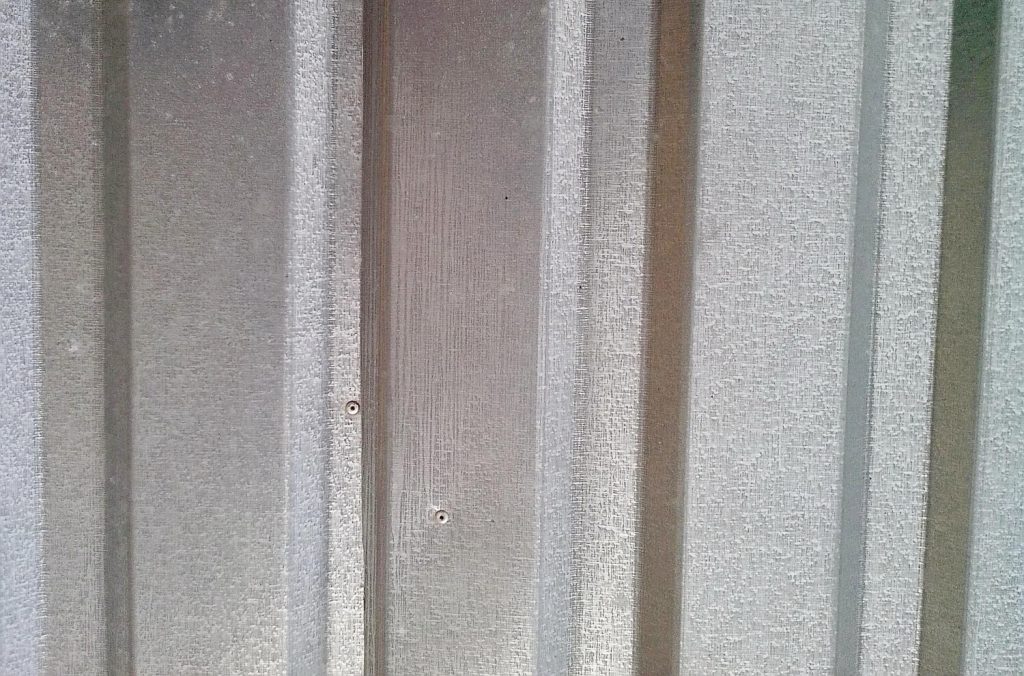
What is galvanized steel?
Galvanized steel is steel that has been dipped and coated in zinc, or hot-treated with an alloy of zinc and aluminum.
The galvanization process seals the metal, effectively weather-proofing it so it doesn’t start to rust the second it gets moist.
Over time, small scratches in the outer coating can lead to rust. But, when well-maintained, galvanized metal can last for years.
Overall, galvanized steel is one the most efficient, sustainable choices of material for constructing raised garden beds.
3 Common misconceptions about galvanized steel garden beds
If you’re growing your own fruits and veggies, chances are, you take your health seriously. You don’t want to feed your family produce that’s loaded with toxic chemicals. That’s totally understandable.
You’re probably also always on the lookout for ways that can make gardening easier and more efficient. Gardening can be fun and rewarding, that’s true. But it can also be costly, to say nothing of laborious.
You’ve probably heard some mistruths about using galvanized steel garden beds. These misconceptions are usually thrown around by well-meaning gardeners who simply don’t know the facts.
The truth is, galvanized steel beds aren’t the bad guys. In fact, they actually have a lot of benefits to offer (more on that in a little bit!).
If you’re here, you’re probably wondering, “Is galvanized steel safe for garden beds?” Let’s take a look at 3 of the most common misconceptions about these beds, and start separating fact from fiction.
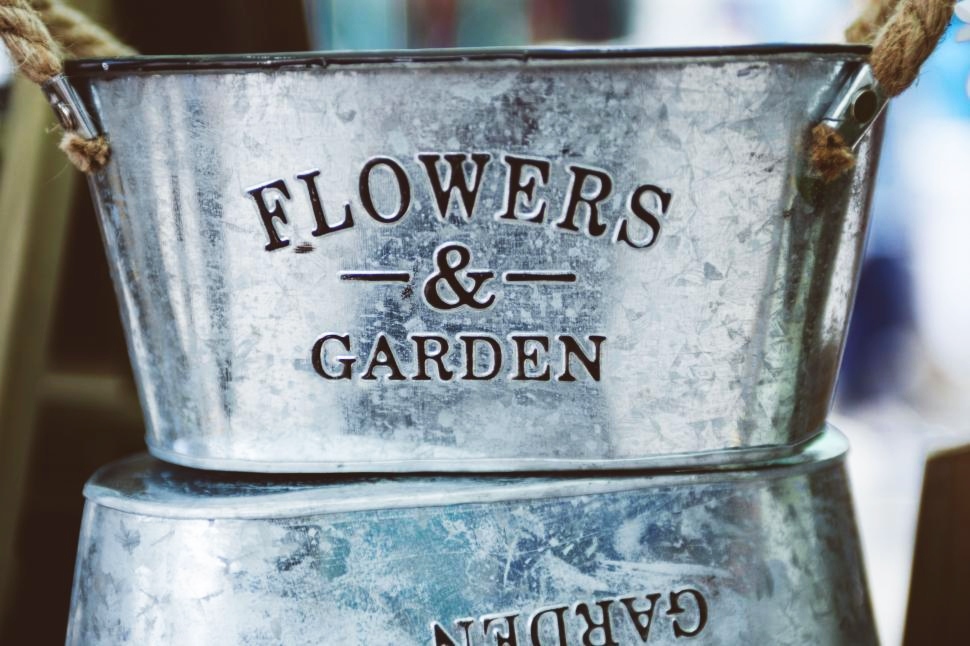
Galvanized steel beds fill the soil with toxic metals
The primary concern that most gardeners have about galvanized steel raised beds is the potential this material has to leach toxic metals, like cadmium, lead, and zinc, into the soil.
Galvanized metal is covered in a zinc coating. The good news is that zinc can only leach into the soil when the soil itself is acidic.
Since most garden soils are neutral, the zinc never makes it into the ground. Test your soil prior to planting to raise the pH and prevent the zinc coating from breaking down.
Some older metals contain cadmium and lead. While we can’t confidently say that the galvanized steel you’re using won’t leach any of these metals into the soil, chances are, they will release such a minute amount of these elements that the soil levels won’t be significantly affected.
Garden soils, whether they’re prepurchased or native, already contain trace amounts of lead and cadmium naturally. And that’s totally normal.
Aged galvanized metals, in particular, that have been left sitting out for years will pose a very low risk of putting toxic metals into your garden’s soil. So if you plan on up-cycling some old roofing metal and turning the panels into garden beds, you can do so with confidence.
If you’re still worried about galvanized steel tainting your soil with metals and other potentially toxic substances, there are some workarounds for this. Stay tuned for the rest of the post to learn more!
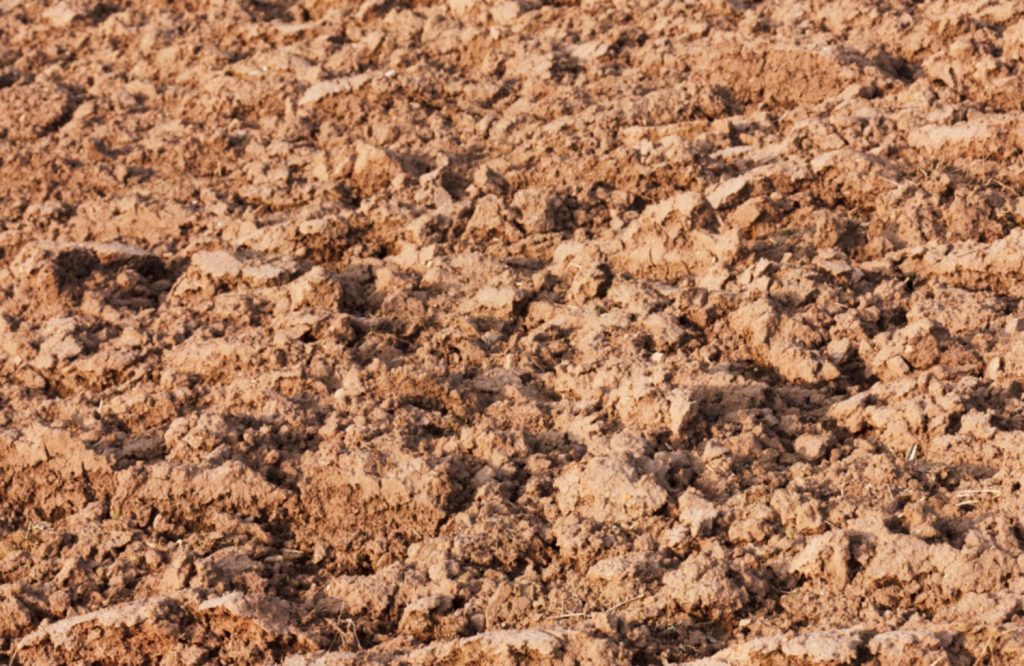
Galvanized steel beds have poor drainage
Another major concern that many gardeners have about galvanized steel garden beds is that they don’t offer plants adequate drainage compared to other materials, like wood.
Any raised garden can have poor drainage. Galvanized steel beds don’t have any better or any worse drainage than any other type of bed.
Ultimately, how well or how poorly your garden bed drains depends on the design of the bed itself.
Obviously, metal isn’t porous. It doesn’t absorb any moisture, whereas wood beds act sort of like a sponge, pulling moisture from your garden beds so the soil dries out much quicker.
Just because metal beds don’t dry out as quickly as wooden beds, that doesn’t mean they have bad drainage. In fact, what it usually means is that metal beds can save time and money by cutting down on your watering schedule!
If your galvanized steel beds are solid metal — say you’re using a livestock trough, for instance — then you’ll need to drill some holes in the bottom for excess water to escape.
Most DIY metal raised garden bed kits are bottomless. You just screw the sides together and set them on top of the ground you’re good to go. These beds shouldn’t have any trouble draining well.
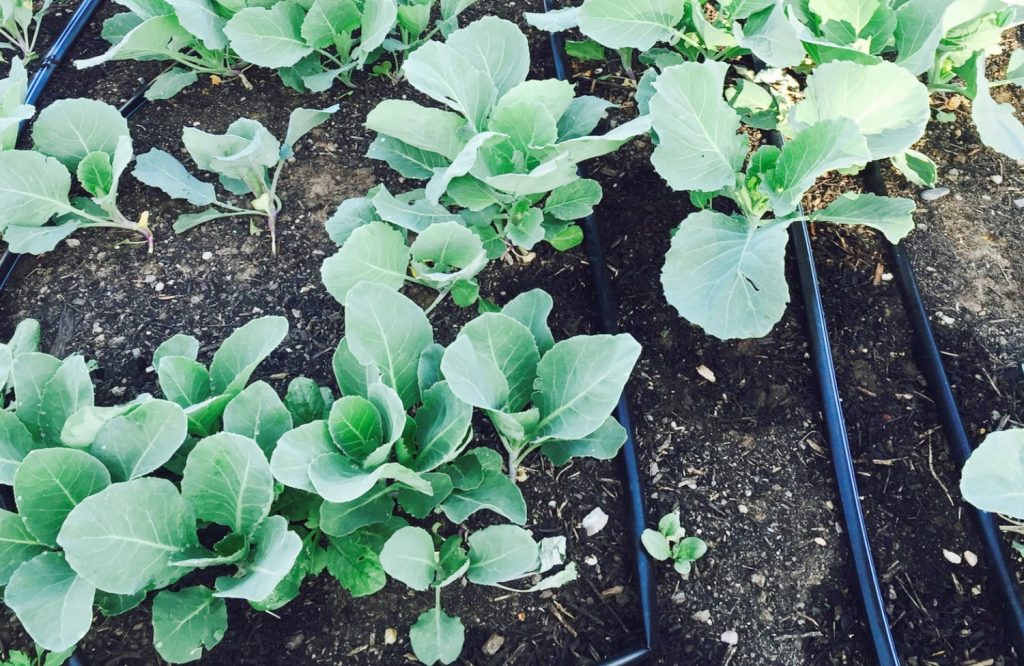
Galvanized steel beds get too hot for plants
If you live in the southern portion of the United States, you may have been told by seasoned gardeners that galvanized steel beds are off the table because they get too hot for plants.
It’s true that metal beds can retain some heat. That’s why we prefer them for winter gardens. They catch the sunlight and keep the soil a bit warmer.
Metal beds are also a great choice if you like to direct-sow seeds in your garden in late winter or early spring. These beds help keep the soil temperature up, so more seeds germinate.
That said, it’s highly unlikely that your metal raised beds would ever get so hot that they would kill your plants.
Don’t get us wrong, the metal itself may get pretty warm. Sometimes, it may be too hot to touch. If you like to garden in shorts, be careful not to lean up against the beds when the thermometer reaches the 90s!
But, hot as the metal may get, the soil that fills the beds acts as an effective insulator, regulating the temperature so your plant’s roots don’t get overheated.
You can keep the soil even cooler by keeping it uniformly moist and applying a 2” to 3” layer of cedar mulch.
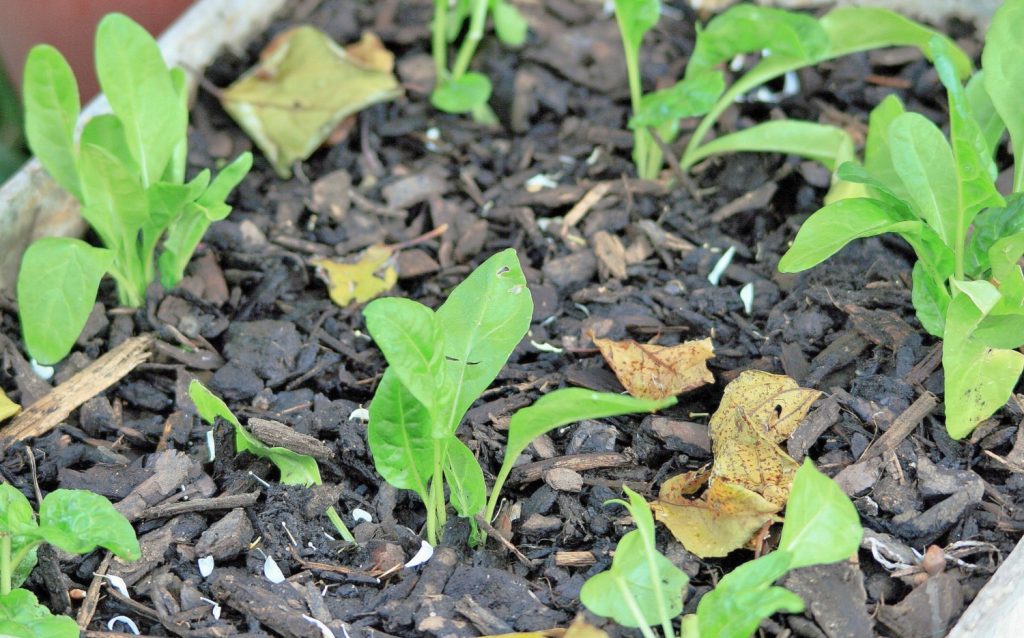
What are the benefits of using galvanized steel for your raised garden beds?
Galvanized steel garden beds get a bad reputation, but if you use them the right way, you’ll soon learn that that bad reputation is entirely unfounded.
In fact, there are many advantages to gardening in galvanized steel beds. Check them out below.
Galvanized steel beds are durable
Galvanized steel garden beds have a heftier price tag than wooden beds. They’re definitely an investment. But the upside is, they last a lot longer, so you get much more bang for your buck.
Metal garden beds can last you for decades, whereas wooden beds, even those made from treated lumber, only tend to last around 10 years tops.
It’s also worth noting that metal is stronger than wood. Filled metal beds are less likely to bend, buckle, or give way to pressure than beds made from other materials.
Galvanized steel beds are lightweight and easy to move
If you assemble your metal raised bed in one area, and then decide you want to move it someplace else the following season, all you have to do is pick it up and set it down. Easy peasy.
But, as anybody who has ever had to do so knows, moving wooden beds can be a nightmare.
First of all, wooden garden beds are heavy. You either need several people to help you move them from point A to point B, or you need a truck, tractor, or some other piece of machinery to take the legwork out of the job.
Second of all, the bottom portion of raised beds tends to decompose much more quickly than the rest of the bed, since it’s in constant contact with the ground. And sometimes it’s hard to tell how much the bottom of the beds has rotted until you try to pick them up.
If your wooden beds have been in the same location for a few years, they may disintegrate before they reach their new destination.
If you plan on growing in raised garden beds so you can move the beds around, please, for your own sake, invest in galvanized steel beds.
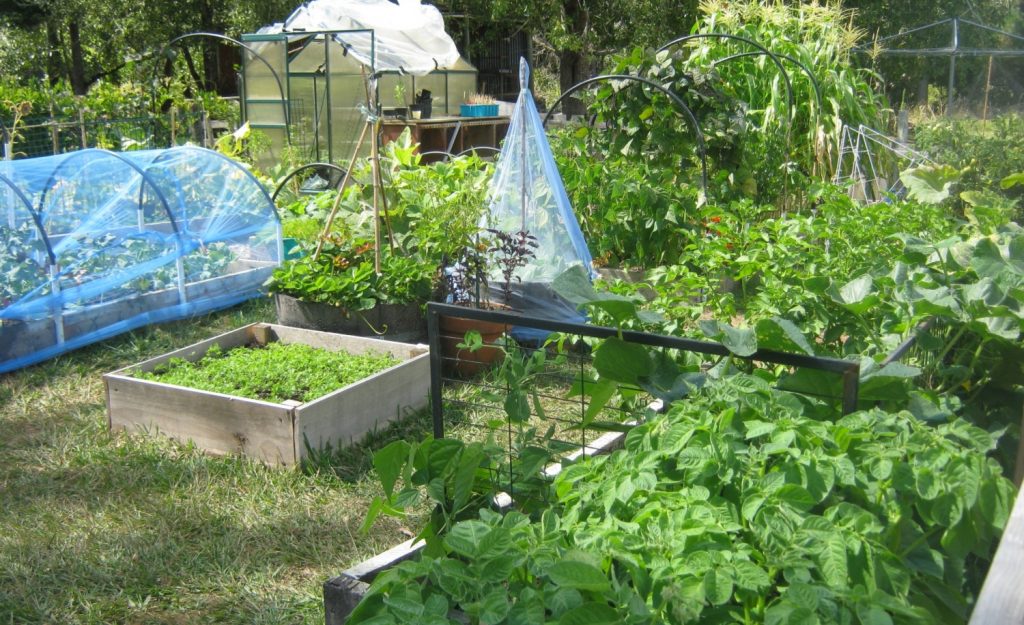
Galvanized steel beds keep pests out
One of the things we like most about galvanized beds is that they help keep unwanted pests at bay. And that doesn’t just go for insects, it goes for gophers and moles as well!
Growing plants in raised beds keeps them up off the ground. Often, this is enough to keep aphids, mites, thrips, and other pesky bugs off your crops without having to resort to using insecticides.
Oh, you may find a few caterpillars on your tomatoes here and there. But, in our experience, growing in raised beds goes a long way toward keeping damaging bugs out.
(As an aside, keeping your plants elevated in raised beds also seems to attract more pollinators. It makes it easier for them to spot the flowers!).
Some galvanized steel beds have bottoms, which really helps keep moles and gophers out. These burrowing critters can destroy your crops in no time flat.
But even if the bed you choose doesn’t have a bottom, it’s easy enough to attach chicken wire or welded garden mesh to the bottom to prevent pests from digging their way in.
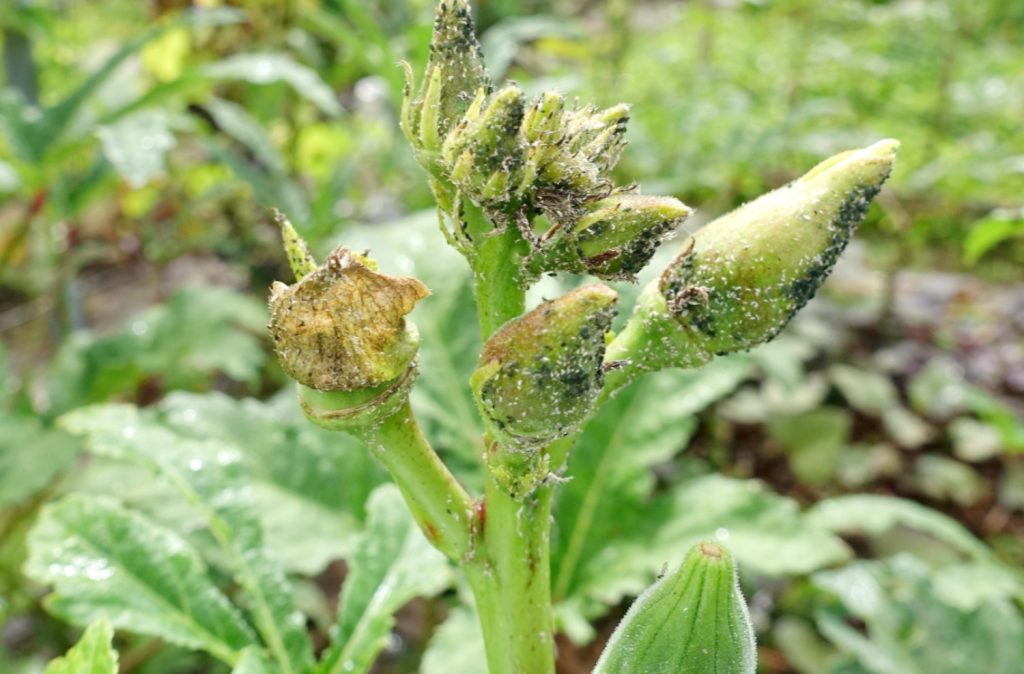
Galvanized steel beds make garden maintenance a breeze
Raised beds can be filled any way you like. You can start with a base layer of wood to basically create a raised hugelkultur bed, or you can fill the bottom with gravel and rocks and top it off with soil. It’s up to you!
Galvanized steel beds may seem restrictive, but they’re actually even more versatile than growing your fruits and veggies in your native soil.
Because you get to fill the beds, you get to choose your own soil.
You can add sand to improve drainage, or peat moss to encourage water retention. You can manipulate the soil pH. You can add a variety of organic fertilizers, like worm castings, bat guano, and manure, to enhance the nutritional profile.
Because the soil is nice and loose, it’s much easier to maintain your plants throughout the season. Not only is it easier for them to take root in loose soil, but it also makes fertilizing simple.
Lastly, because galvanized steel beds are up off the ground, they make it much easier to weed and water. No more getting down on your hands and knees!
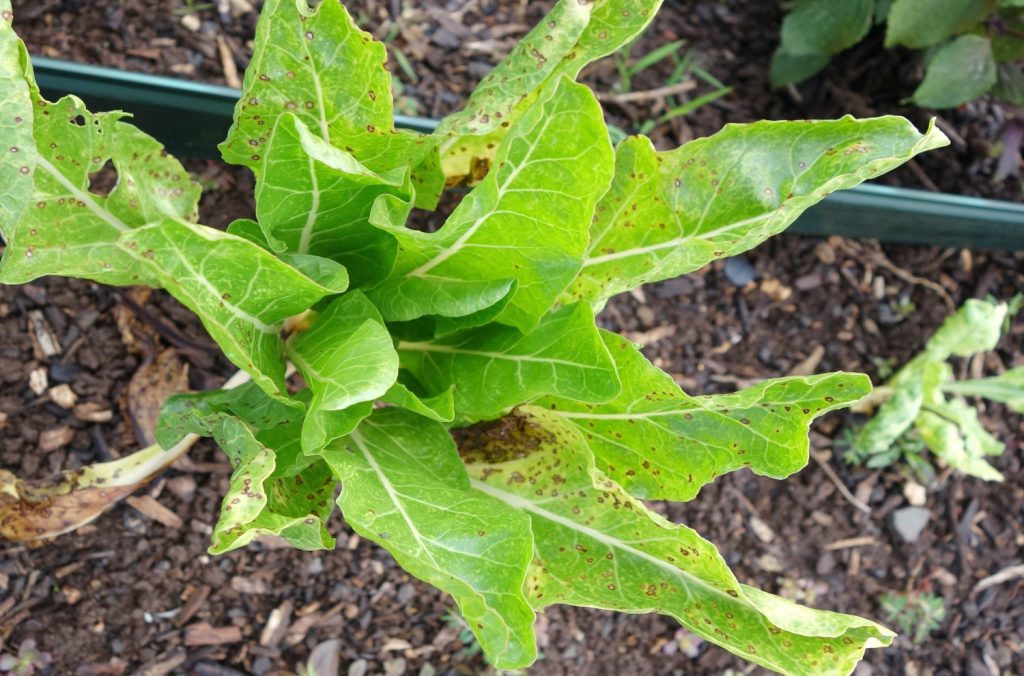
How to maintain galvanized steel beds so they last longer
Proper care will increase the lifespan of your metal garden beds, so you can make sure your investment lasts you a long time.
Here are a few tips that will enable you to get the most out of your new metal garden beds.
Choose the right location
Where you place your metal beds depends on your climate.
In cooler regions, keep the beds in a spot where they’ll receive 6 or more hours of sunlight.
In hotter climates, situate metal beds in a place where they’ll receive 4 to 6 hours of direct sunlight.
We’ve grown plenty of fruits and veggies in metal raised beds, and we’ve never had any issues with plants getting overheated.
Keeping your metal raised beds in the right location is more to help control evaporation.
Because metal attracts heat, it can dry out the soil a bit too quickly in warmer regions. Keeping these types of beds in partial sunlight will help keep your plants hydrated.
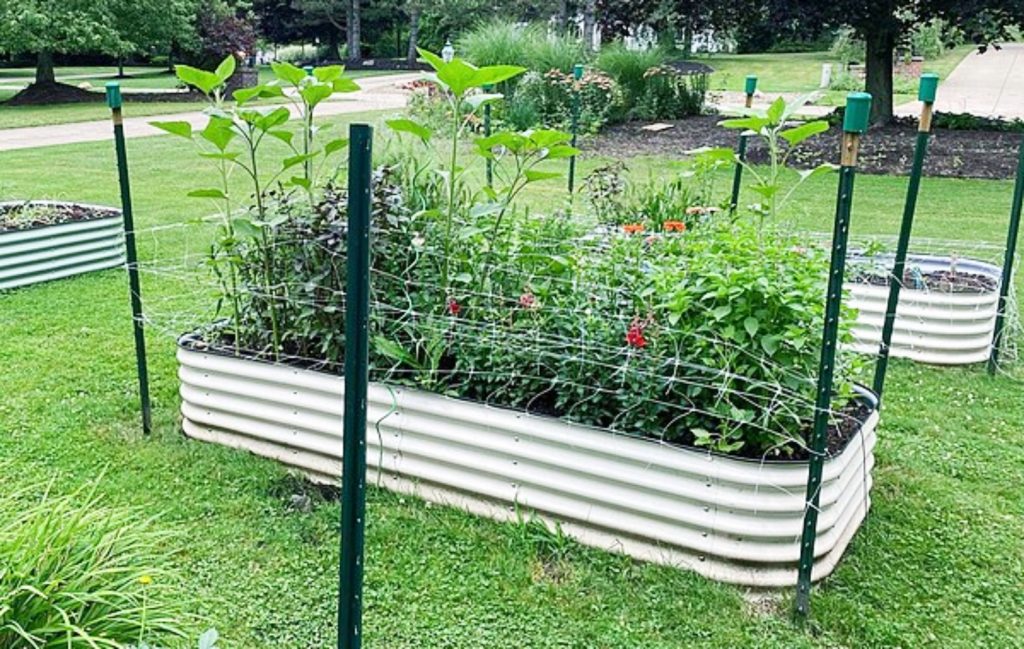
Spread a liner before filling the bed
If you’re still a little nervous that the metals in your galvanized beds will leach into the soil, then simply use a liner. This will prevent the beds from breaking down, so they last longer.
You can use a tarp, weed fabric, or black construction plastic to line your galvanized beds. It’s up to you. If you use a tarp or plastic, be sure to poke plenty of holes in the bottom to allow for drainage.
Set a few rocks in the corners of the beds on top of the plastic to keep it spread out and in place once you start filling the beds. Fold the liner up over the sides, and trim the excess back to an inch or so below the top of the beds once you’ve filled them up.
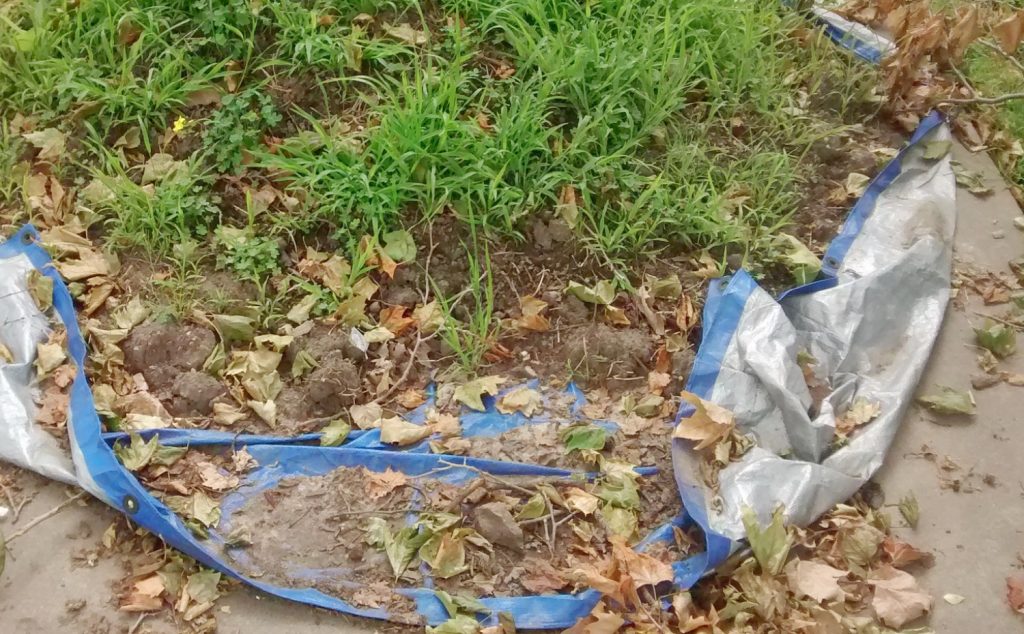
Fill the beds with neutral soil
Remember, acidity is what causes galvanized metal to start leaching zinc into the soil.
So to keep your galvanized metal beds intact, fill them up with neutral garden soil.
Check the back of the bag to determine the soil’s pH level before using it to fill your garden beds. If no pH level is available, use pH testing strips to check the acidity.
If you already have the soil that you’d like to use to fill your galvanized metal beds, but it’s just a bit too acidic, raise the pH with lime, wood ash, or bone meal.
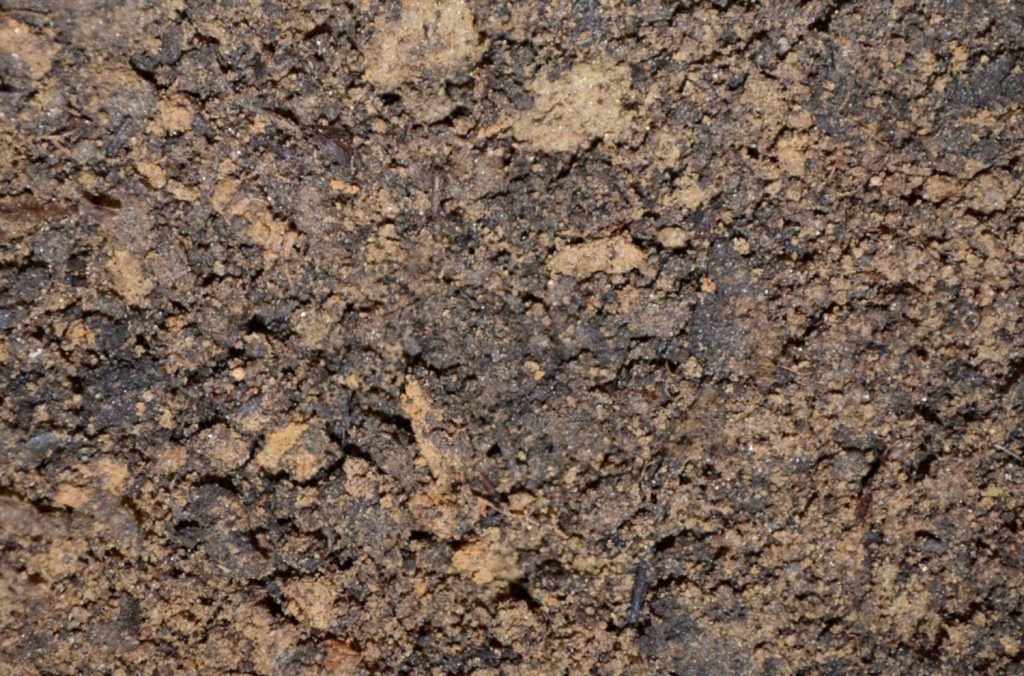
How can you tell when to replace galvanized steel beds?
So, is galvanized steel safe for garden beds? You bet! Galvanized steel garden beds can last for years, especially if you’ve taken measures to prepare them properly. They’re a great choice for your backyard garden.
But, like anything else, galvanized steel beds will wear out eventually. And, when they do, it’s important to replace them.
As metal rusts, it releases iron, which can contaminate your soil. This won’t necessarily prove toxic to you or your family, as there is a limit as to how much iron plants can absorb.
However, high levels of iron in the soil can lead to relative nutritional deficiencies for your plants. If iron from your raised beds begins contaminating your soil, your crops will start to develop yellow foliage and other signs of iron overload.
When galvanized metal begins to rust, it also becomes structurally unsound. Rust gives way to holes, and those holes can grow pretty fast. Before you know it, your metal beds are leaking soil all over your lawn.
If your galvanized metal beds only have a few rusty spots here and there, they’re probably fine for several more seasons. But if they’re riddled with holes, it’s time to dispose of them and invest in new ones.
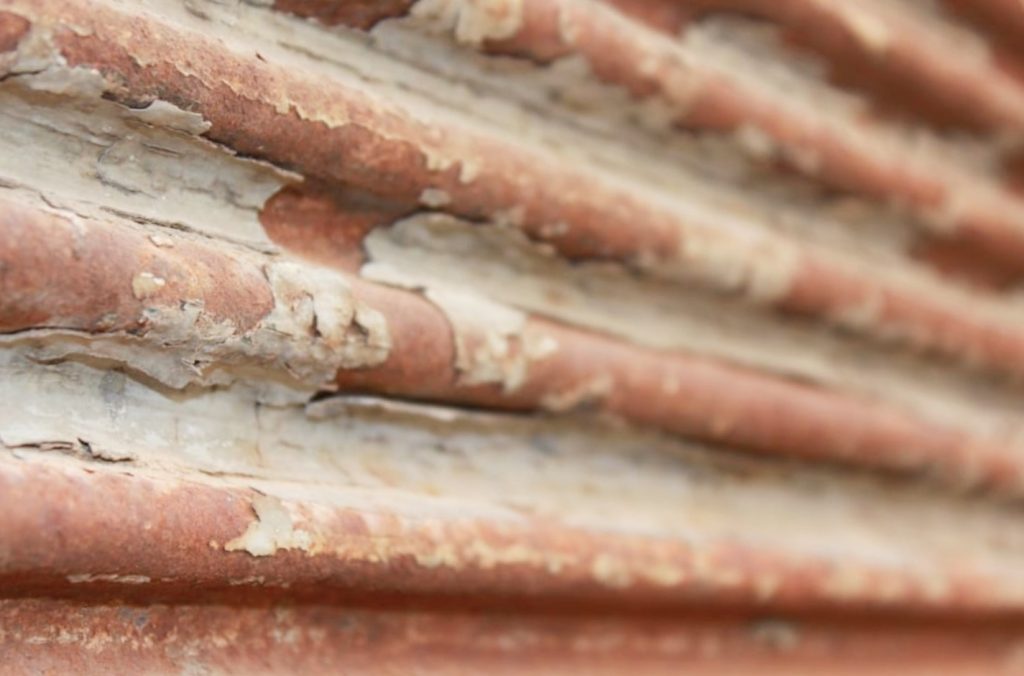
Are galvanized steel garden beds worth the investment?
Of all of the raised garden options out there, galvanized steel beds are among the best. They’re lightweight, versatile, and easy to use. Plus, they can last for a really, really long time.
So if you can afford the initial investment, we highly recommend purchasing metal raised beds.
If you’re wondering, “Is galvanized steel safe for garden beds?”, we hope you can rest easy now, knowing these types of beds pose no threat to your fruits and veggies.
With the proper upkeep, galvanized steel beds can last for years, giving you the chance to produce season after season of delicious homegrown crops.
